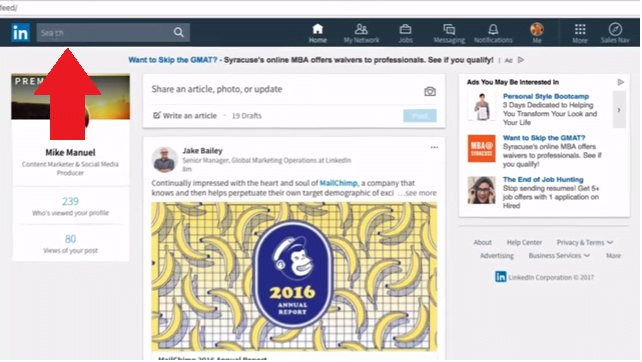

As part of LinkedIn’s new desktop experience – which is currently in the process of being rolled out to all users – LinkedIn has changed the way their on platform search results are displayed, and added some additional functionality for advanced users.
As explained by LinkedIn:
“In this redesign, you now have one single search box at the top of every LinkedIn page to find People, Jobs, Companies, Groups and Schools. Searching for Posts will also be coming soon.”
To help maximize the use of the new LinkedIn Search, the company has released two new videos explaining the process.
The first element is people search, which functions much the same way as it always has, though the layout and design is a little different.
As you can see, you still have all the existing filters and tools, but they’ve been moved around the screen, which may take a moment to get used to.
Worth noting here too that LinkedIn has removed some of the advanced search filters which were available to Premium users. In December, LinkedIn moved several search parameters – including ‘years of experience’, ‘function’, ‘seniority level’, as well as the ability to search in Groups – over to the more expensive Sales Navigator platform. The change has upset many power users – those qualifiers are still available, but you now have to pay a little more to use them.
These advanced filters were, however, only available to Premium subscribers – free users have not lost any search functionality as a result of this latest update.
When searching for jobs, LinkedIn has also updated the layout and process.
The functionality is much the same, with the job alerts option moved to the right hand side, instead of in-stream.
You can also access the job search option by clicking on the ‘Jobs’ tab from the top function bar.
In addition to this, LinkedIn’s also added a set of five search operators to help you narrow down your results. Search operators are the additional qualifiers you can add to your basic search to improve focus – on Twitter, for example, adding “–filter:links” to the end of your search query will only return tweets with no links included.
On LinkedIn, you can now use the following qualifiers to improve the relevance of your search results.
- firstname: Finds members based on first name
- lastname: Finds members based on last name
- title: Finds members based on their current title
- company: Finds members based on their current company (keyword search)
- school: Finds members based on schools attended (keyword search)
You can also add AND, OR and NOT qualifiers, but those have always been available.
Here’s a quick example: to search for current software engineers not named Doe, who have attended either Harvard University or Stanford University, try:
title:”software engineer” NOT lastname:doe school:(harvard OR stanford)
There’s a full rundown of the advanced search parameters available on the LinkedIn Help page.
Overall, there’s no major additions to search functionality, but it’s important to understand how LinkedIn Search works, while the added search operators provide new considerations on how to best filter down the data you’re after.
[Source:- Socialmediatoday]
